Varanasi Tourist places - "City of Temples"
About Varanasi
Varanasi, also known as Kashi or Banaras, is one of the oldest cities in the world and a treasure trove of spiritual and cultural heritage. Located on the banks of the sacred river Ganges in the Indian state of Uttar Pradesh, Varanasi offers a unique and unforgettable experience for visitors.
Varanasi Tourist places has a rich history that dates back over 3,000 years. It is considered one of the seven holy cities in Hinduism and has been a major center for learning, culture, and spirituality. According to legend, the city was founded by Lord Shiva, one of the principal deities of Hinduism. Varanasi has been a significant pilgrimage site for Hindus, Buddhists, and Jains throughout history. Visiting the temples and participating in the rituals provides a deep sense of spiritual awakening and peace.
Festivals and Events at Varanasi Tourist places
January | Makar Sankranti |
February | Mahashivratri |
March | Holi |
Best Time to Explore Varanasi Tourist Places
Peak Season | October – March | The weather is pleasant, with temperatures ranging between 5°C and 15°C. |
Moderate Season | April – June | Heavy rainfall accompanied by high humidity. |
Off-Season | July – September | The weather is scorching and arid. |
Discover the Timeless Beauty of Varanasi Tourist Places: A Complete Guide to Varanasi Tourism
Kaal Bhairav Temple
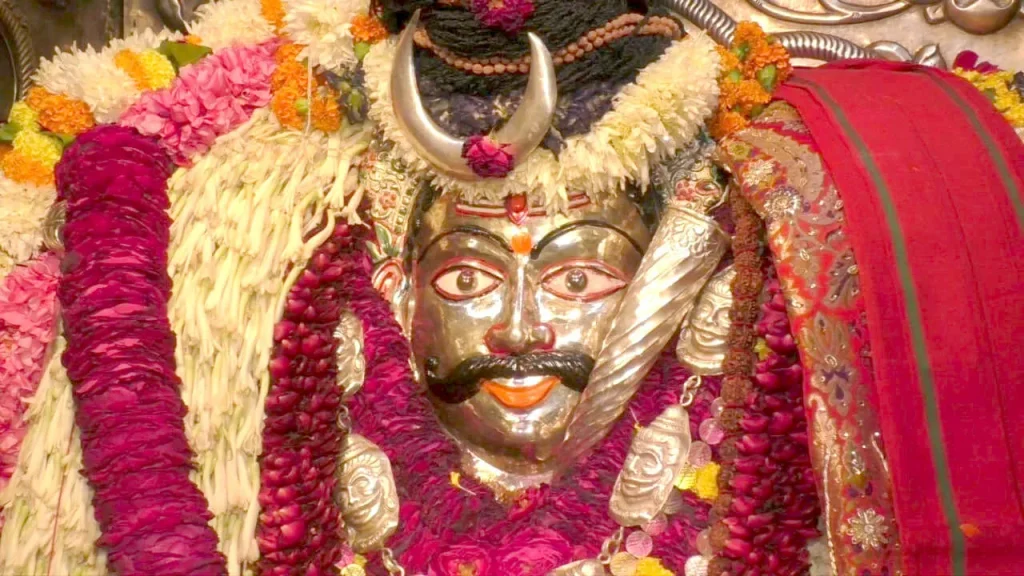
The Kaal Bhairav Temple is dedicated to Kaal Bhairav, a fierce form of Lord Shiva. Locals believe that Kaal Bhairav is the protector of Varanasi. The temple’s powerful atmosphere attracts devotees seeking protection and blessings.
Sankat Mochan Hanuman Temple

Founded by the poet-saint Tulsidas, this temple is dedicated to Lord Hanuman. It is believed that visiting this temple helps remove obstacles and brings peace and prosperity. The continuous chanting of Hanuman Chalisa adds to the temple’s serene ambiance.
Ganga Aarti at Dashashwamedh Ghat
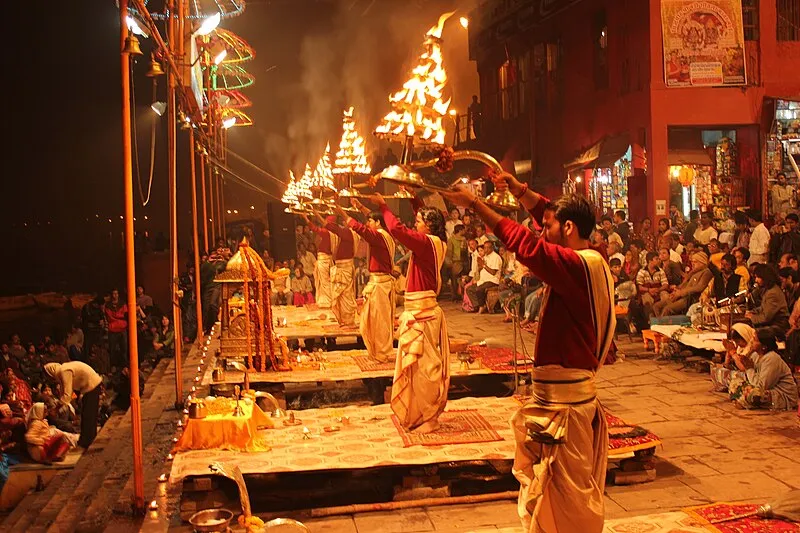
The Ganga Aarti is a mesmerizing evening ritual performed at Dashashwamedh Ghat. Priests perform the aarti with large fire lamps, rhythmic chants, and ringing bells, creating a divine and unforgettable experience.
Kashi Vishwanath Ji Temple
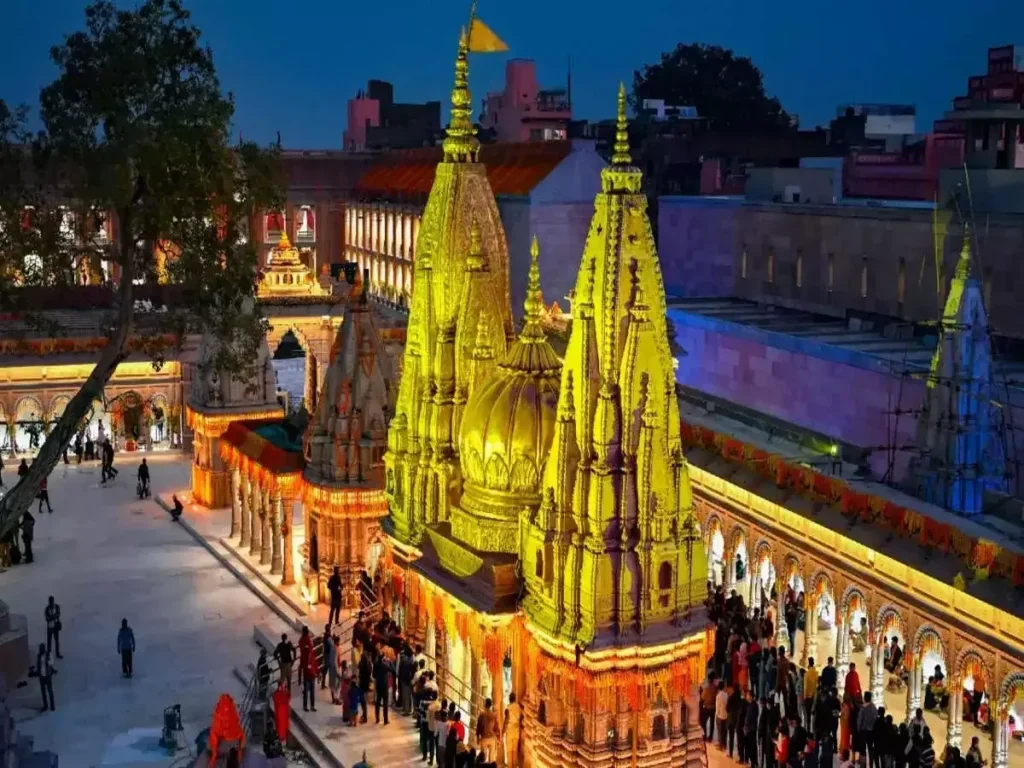
Dedicated to Lord Shiva, the Kashi Vishwanath Temple is one of the twelve Jyotirlingas, the holiest of Shiva temples. The temple’s golden spire and its location near the Ganges make it a significant spiritual destination.
Sarnath
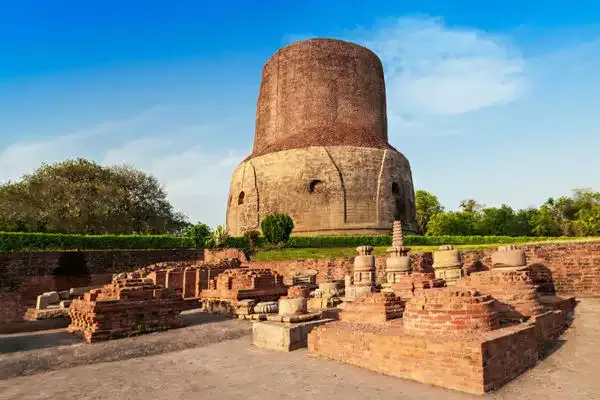
Sarnath is a major Buddhist site where Lord Buddha gave his first sermon after attaining enlightenment. It features ancient stupas, monasteries, and the Ashoka Pillar, which is India’s national emblem.
Dhamek Stupa
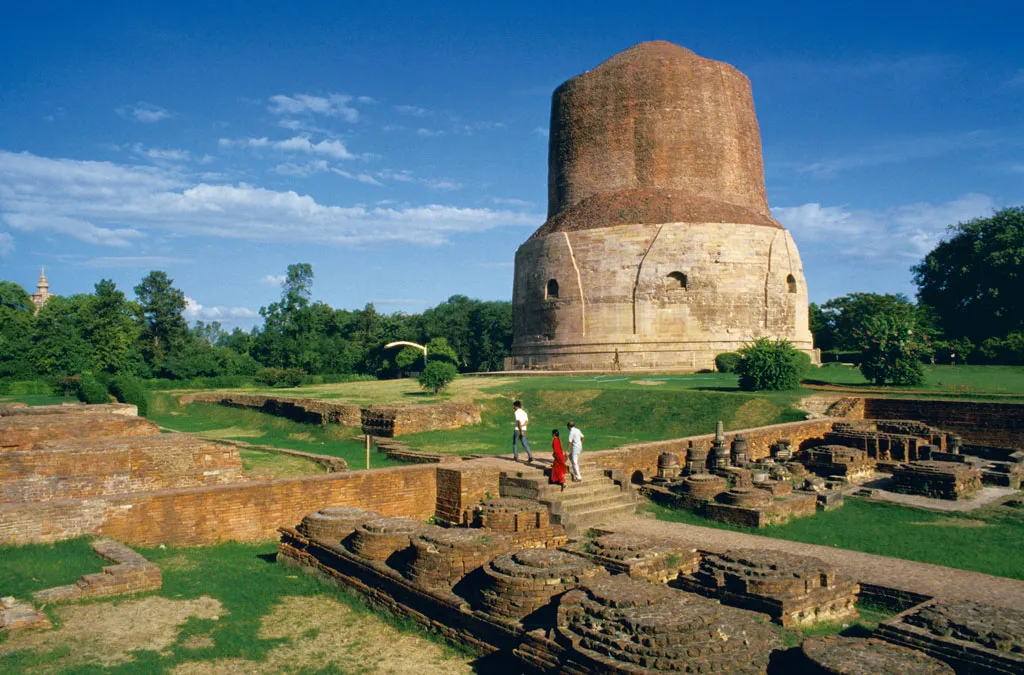
Located in Sarnath, the Dhamek Stupa marks the exact spot where Buddha delivered his first sermon. The stupa, with its intricate carvings, is an important pilgrimage site for Buddhists.
Chaukhandi Stupa
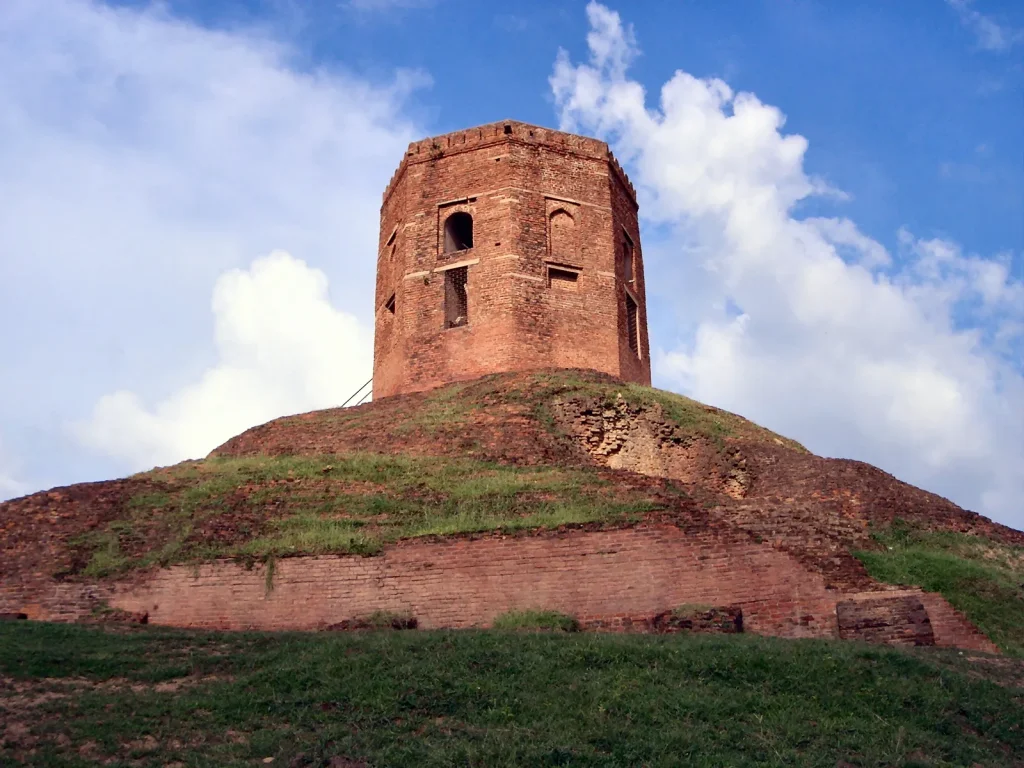
Also in Sarnath, the Chaukhandi Stupa marks the spot where Buddha met his first disciples. The stupa’s octagonal tower, added during the Mughal period, enhances its architectural beauty.
Manikarnika Ghat
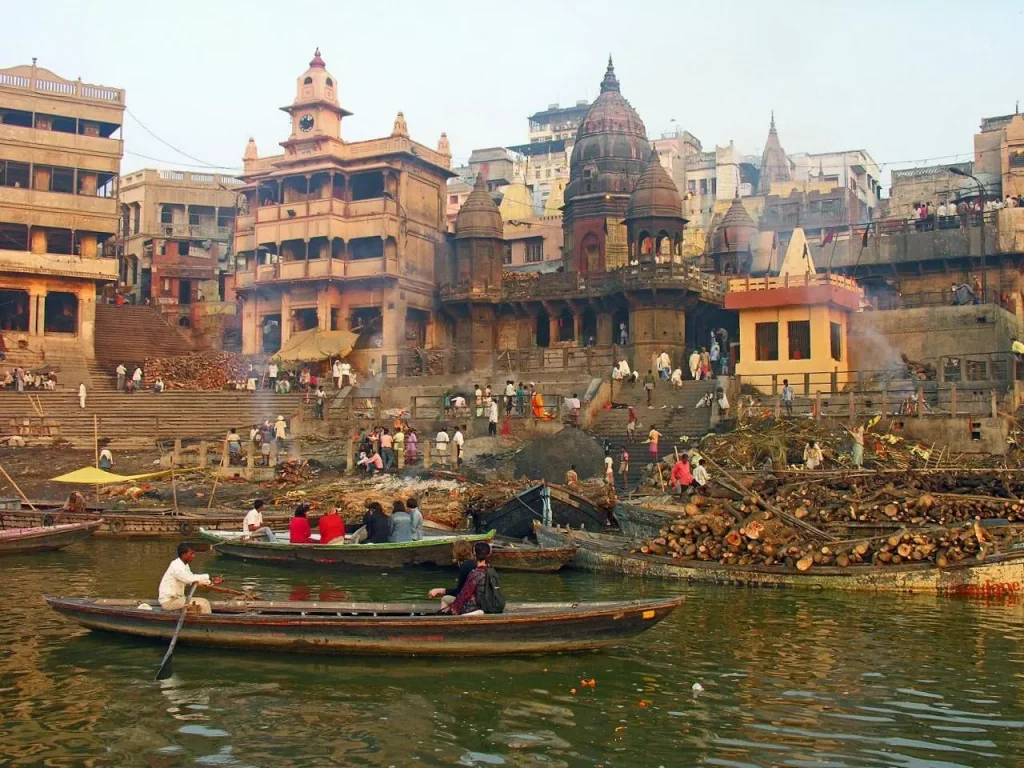
The main cremation ghat in Varanasi, where the eternal flame burns continuously. It is a place that offers a profound perspective on the cycle of life and death.
Prayagraj
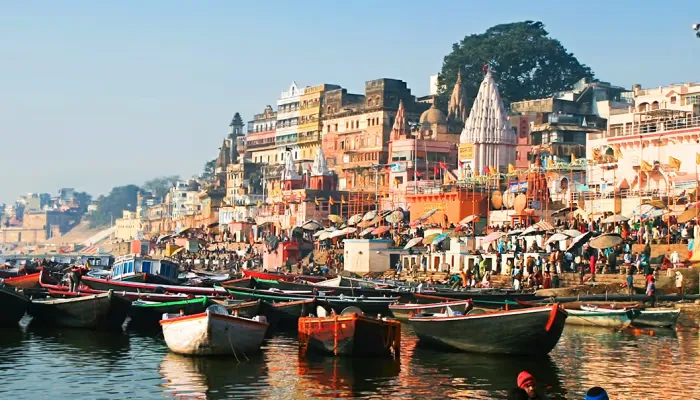
Prayagraj, formerly known as Allahabad, is a city of significant historical and spiritual importance located at the confluence of three rivers: the Ganges, Yamuna, and the mythical Sarasvati. This confluence, known as Triveni Sangam, is the heart of the city and a major pilgrimage site.
Triveni Sangam
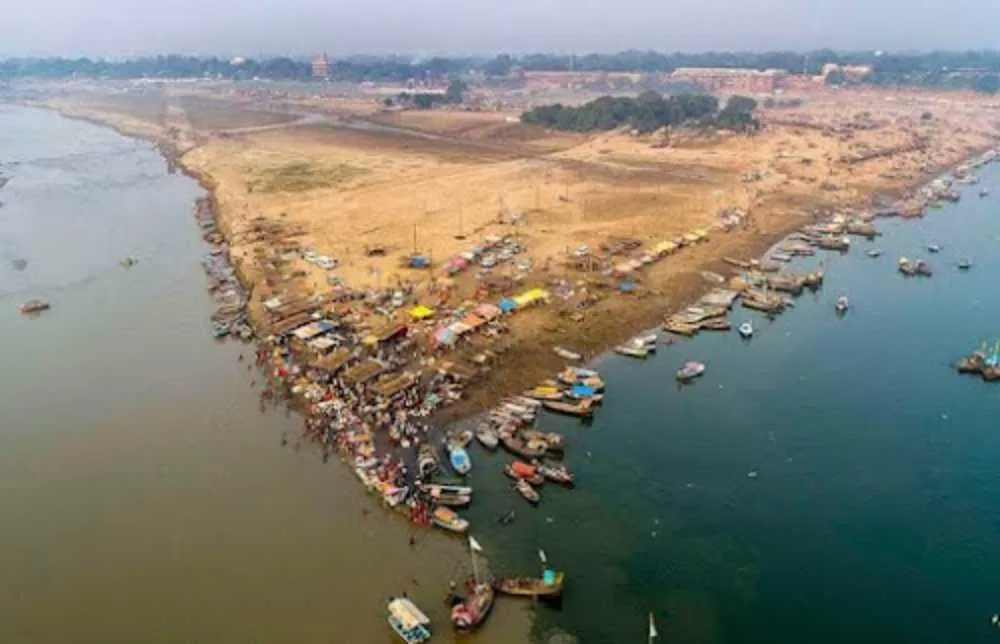
The Triveni Sangam is the confluence of three rivers: the Ganges, Yamuna, and the mythical Saraswati. It is a sacred place where devotees come to perform rituals and take a holy dip, especially during the Kumbh Mela.
Akshaya Vat
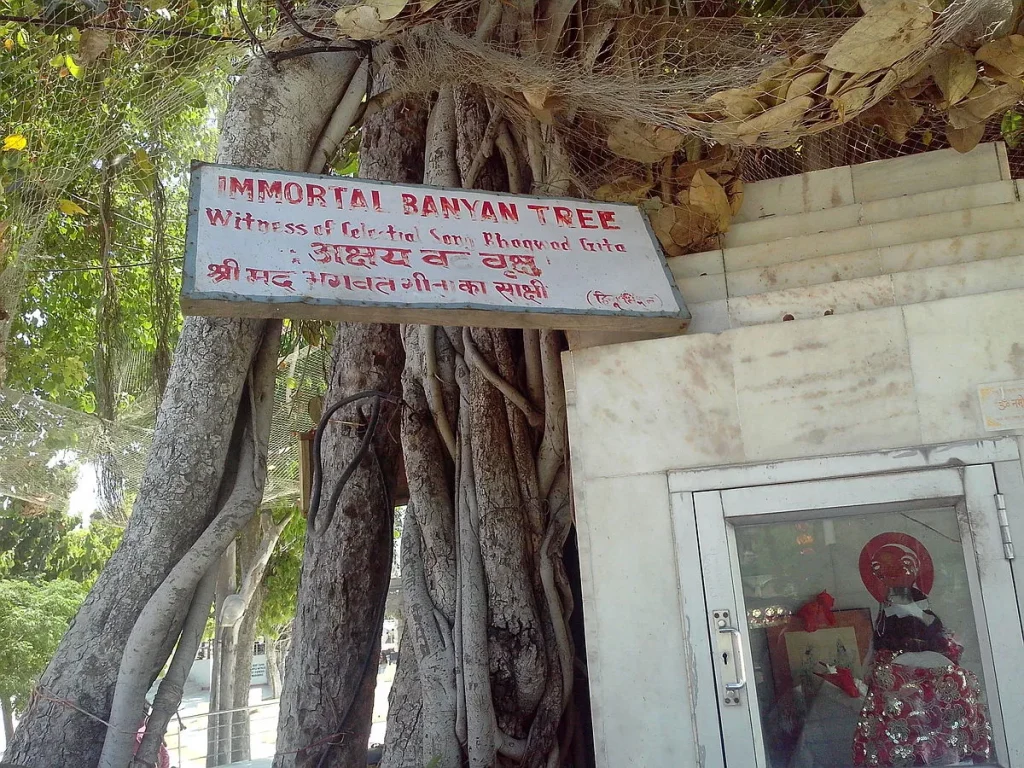
Akshaya Vat, or the eternal banyan tree, is located within the Allahabad Fort. It is believed to be indestructible and is considered a sacred site for performing religious rituals.
Khusro Bagh
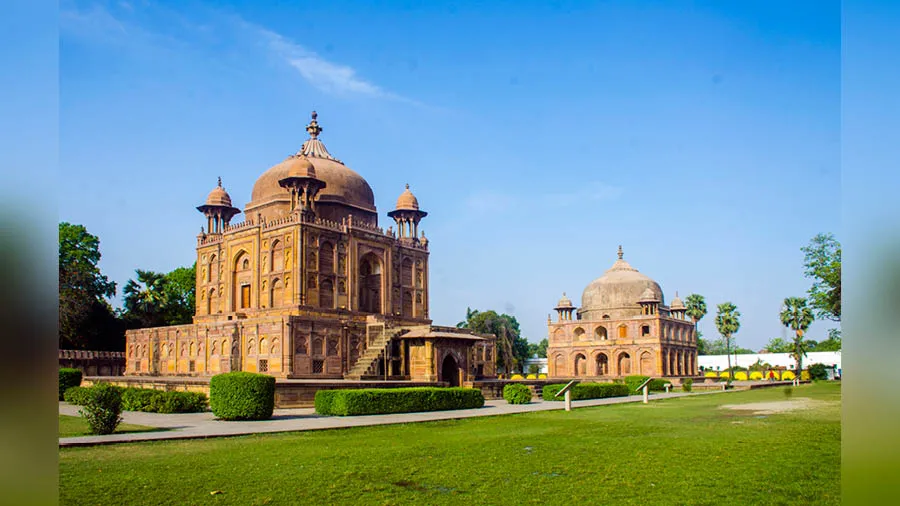
Khusro Bagh is a historical garden and burial complex containing the tombs of Prince Khusro, the eldest son of Emperor Jahangir, and other members of his family. The Mughal architecture and serene gardens make it a place of historical interest.
Ayodhya
Ayodhya, a city steeped in spiritual significance and historical richness, is a key destination for those exploring India’s religious heritage. Known as the birthplace of Lord Rama, a major deity in Hindu mythology, Ayodhya offers a profound journey into the heart of Indian culture and religious traditions.
Shri Ram Janmabhoomi
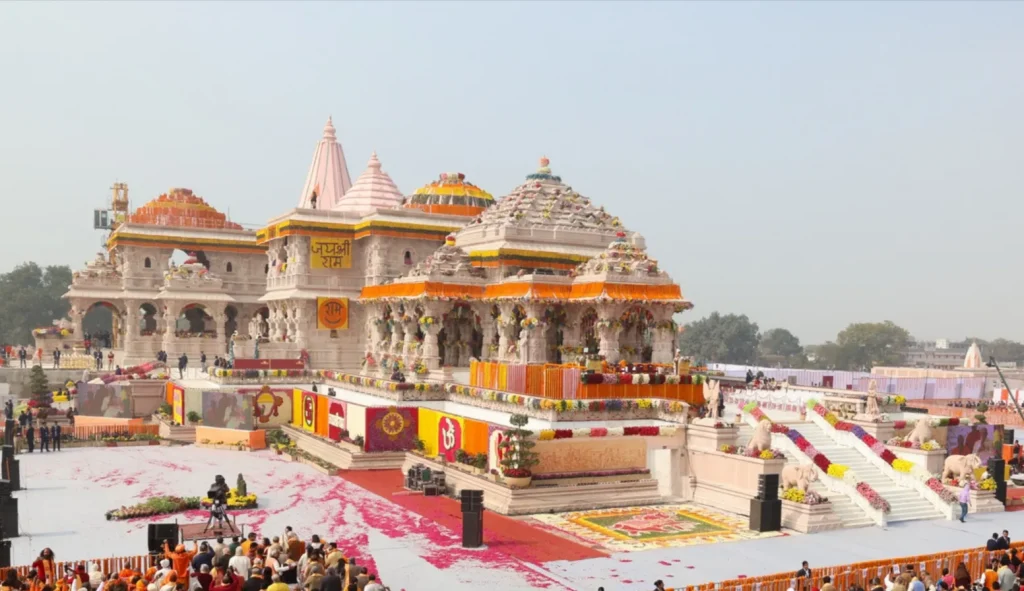
Shri Ram Janmabhoomi is believed to be the birthplace of Lord Rama. It holds immense significance for Hindus and is a major pilgrimage destination. The site attracts millions of devotees every year.
Dashrath Mahal
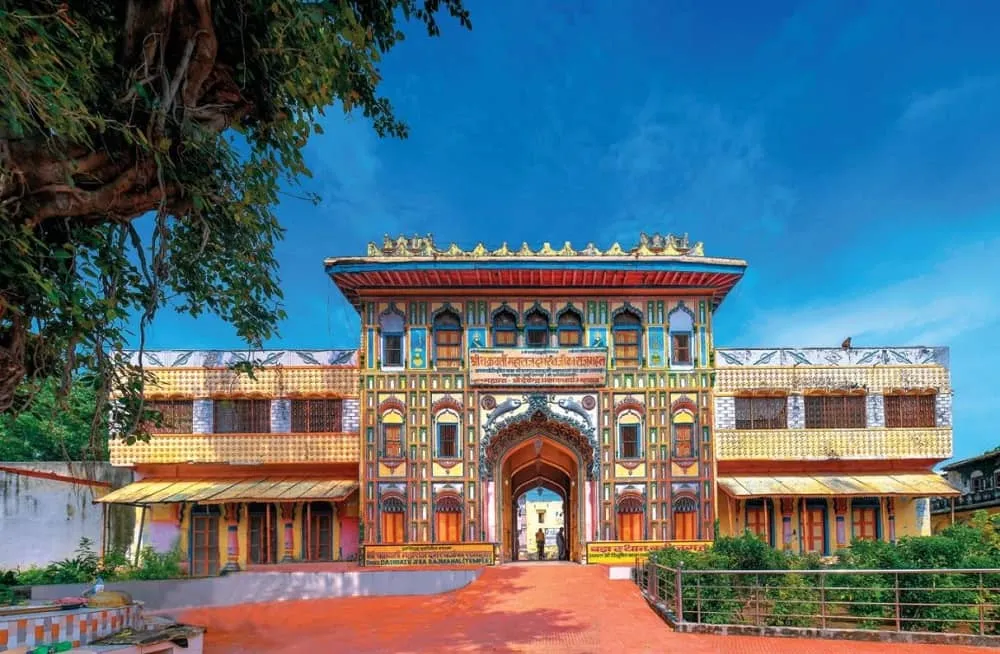
Dashrath Mahal, also in Ayodhya, is said to be the royal palace of King Dashrath, Lord Rama’s father. It is a beautiful building with significant historical and religious value, attracting pilgrims and history enthusiasts alike.
Local Delicacies to Try While on Varanasi Tourist Places!
Jalebi

These deep-fried spirals of batter soaked in sugar syrup are a sweet delight. Crispy on the outside and syrupy inside, jalebis are a favorite sweet treat in Varanasi.
Thandai
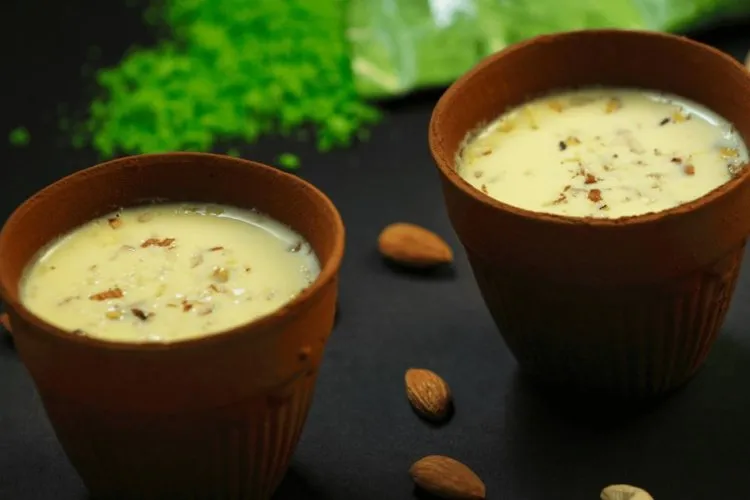
A traditional drink made from milk, almonds, and a blend of spices, often garnished with rose petals and saffron. It’s especially popular during festivals like Holi and Shivratri.
Kachori Sabzi

A popular breakfast item, this dish consists of spicy, deep-fried kachoris served with a flavorful potato curry. It’s a hearty and satisfying way to start your day in Varanasi.
Banarasi Paan

A visit to Varanasi wouldn’t be complete without trying the famous Banarasi paan. This betel leaf preparation, filled with a mixture of areca nut and other ingredients, is a traditional mouth freshener.
Baati Chokha
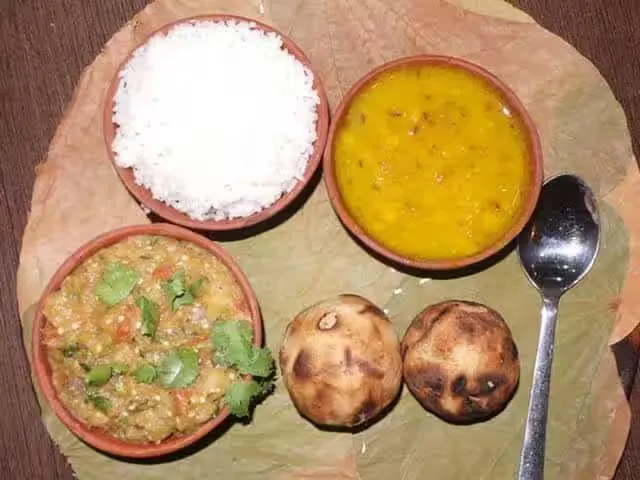
A traditional dish from the region, baati chokha includes baked wheat balls served with mashed potatoes, brinjal, and tomato mixture. It’s a flavorful and hearty meal.
Chaat

Varanasi is famous for its variety of chaat, including tamatar chaat, aloo tikki chaat, and dahi puri. These tangy and spicy snacks are perfect for an afternoon treat.
Frequently Asked Questions About Varanasi Tourist Places
- Kashi Vishwanath Temple: One of the most famous Hindu temples dedicated to Lord Shiva and a major pilgrimage site.
- Dashashwamedh Ghat: Known for the grand evening aarti performed daily on the banks of the Ganges.
- Manikarnika Ghat: The primary cremation ghat in Varanasi, where eternal flames burn.
- Sarnath: Located just outside Varanasi, it’s where Buddha delivered his first sermon after attaining enlightenment.
- Ramnagar Fort & Museum: Across the Ganges from Varanasi, this fort offers a peek into the royal collection of vintage cars, medieval costumes, and armaments.
- Assi Ghat: A lively ghat famous for its morning rituals and cultural activities.
The best time to visit Varanasi is during the cooler months from October to March. The weather during this period is pleasant, making it ideal for exploring the city and participating in outdoor activities like boat rides and walking tours.
Ideally, a stay of 3 to 4 days is sufficient to explore the major attractions of Varanasi, experience a boat ride on the Ganges, attend the Ganga aarti, and visit nearby Sarnath.
Varanasi is generally safe for tourists. However, like in any crowded tourist destination, it’s advisable to keep an eye on your belongings, especially in busy areas like ghats and markets. It’s also wise to arrange transport through your hotel or a reputable service, especially at night.
When visiting temples in Varanasi, it is recommended to dress modestly. Women should ideally wear long skirts or pants and cover their shoulders. Men should wear pants and shirts that cover their shoulders. Some temples may require visitors to remove their shoes or wear a head covering as signs of respect.
Conclusion
As we wrap up our exploration of Varanasi, remember that this city is more than just a place to visit—it’s a deep dive into history, spirituality, and culture. From the lively ghats by the Ganges to sacred rituals and bustling markets, Varanasi truly captures the spirit of India. Whether you’re looking for peace, historical knowledge, or a slice of daily life, Varanasi has something for everyone. Plan your trip to experience the timeless charm of one of the world’s oldest cities. Come and see Varanasi for yourself, where every day brings new stories and fresh beginnings. We look forward to welcoming you to this extraordinary city.

